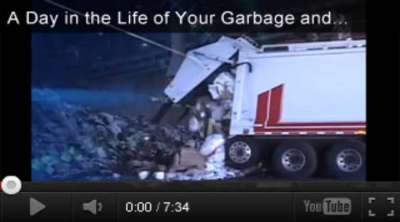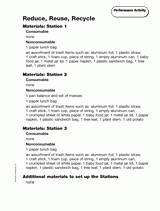by Emily Ann O'Neil
Going green in your classroom is not only good for the environment; it can save you money, too. These classroom tips and ideas will lessen the impact on your wallet. They'll also reduce your carbon footprint. Use the following information, suggestions, and activities to encourage eco-conscious habits and behavior in your students, while educating them about their influence on the environment.
In this article, you will learn many creative ways to reduce, reuse, and recycle paper in your classroom. Discover how fun projects and simple changes that conserve energy and reduce waste can promote sustainable behavior. You will also find great tips on how to use technology to eliminate classroom clutter and cut back on paper products. The information and advice in this article will get you thinking about the size of your carbon footprint in the classroom and at home.
Paper: Reduce, Reuse, and Recycle
Water, energy, landfill space, and trees are all saved when paper is recycled. Recycling is a good way to help conserve resources, reduce pollution, and soften the environmental impact of schools. Educate students about the process of recycling. Use recycled materials to create designated bins in your classroom for this purpose. Inform parents about the ways in which your classroom is going green. Ask them to consider donating items to the classroom instead of trashing them. Items might include scrap paper from the office, which could be used for notes; stacks of old magazines and newspapers, which could be used for art projects; and old furniture or bookcases, which could be used to create a classroom reading corner.
There's a variety of ways in which you can reuse paper and reduce paper consumption in your classroom. For starters, use both sides of a sheet of paper when making photocopies or printing multi-page worksheets or handouts. Remind students to follow your example by writing on the back of paper when taking notes and completing assignments. Working in groups will reduce the amount of handouts that are needed. Writing on chalkboards and whiteboards during lessons and games is another way to save paper.
Students' scrap paper, old magazines, and newspapers can be reused for notes, bookmarks, and art projects throughout the school year. Use extra newspaper for papier-mâché projects, such as a piggy bank or an Easter egg. Create recycled poetry, Thanksgiving art, holiday placemats, or a career bulletin board from old newspapers and magazines. Scrap paper can also be used for projects across your curriculum, from art to science. Teach your students about the process of recycling with a hands-on activity in which they use scrap paper to make recycled paper. This recycled paper and other paper products can be used to make a paper quilt, as students learn about American folk art. Scrap paper is also useful for daily writing activities. Get your students thinking about ways to reuse common objects with a writing assignment about recycling. Then, make a list of students' ideas on the chalkboard. Encourage recycling at home by sending this list of ideas home to parents, or by posting it on your classroom website.
Make the most of the resources in your school and town library before heading to the bookstore. Another way to reduce your carbon footprint is to share classroom books with other teachers. By borrowing or sharing books, you save money and avert the environmental impact of purchasing new copies. If you still can't find what you need, see if you can buy a used copy of the book from a local bookstore.















